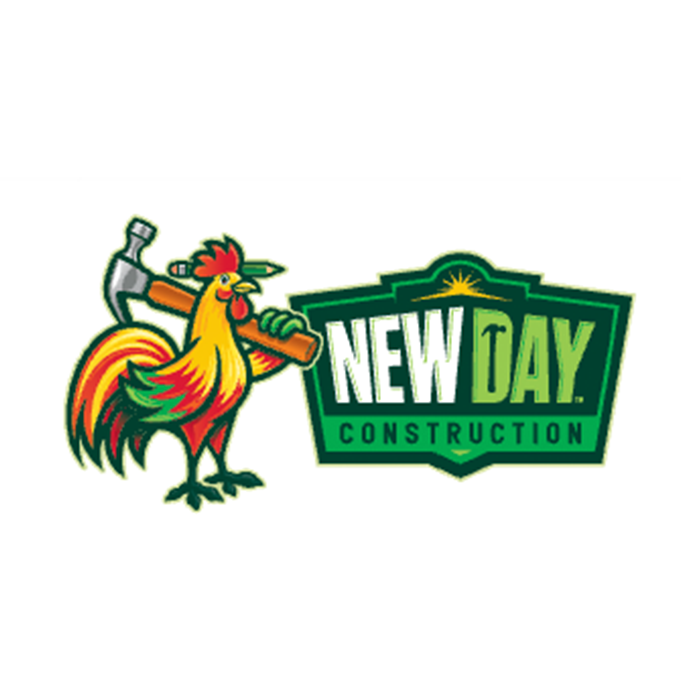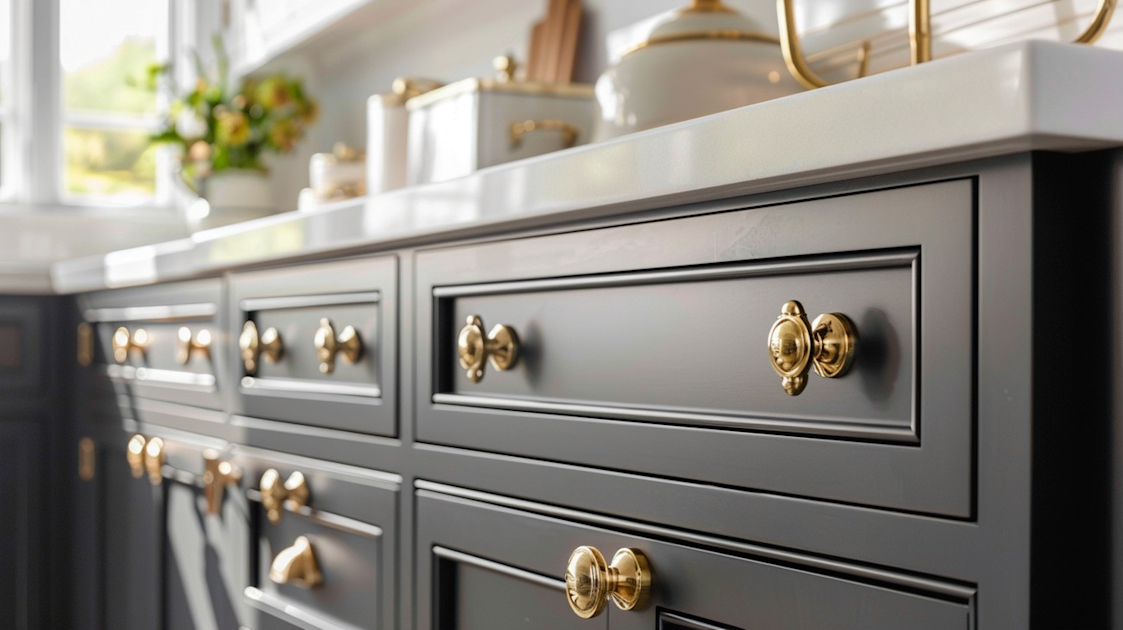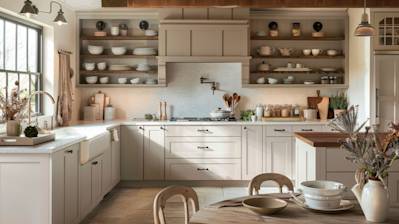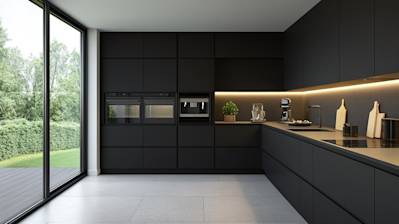Transforming your kitchen into a stylish and functional space often starts with the small details, like the right kitchen cabinet hardware. This comprehensive guide will lead you through everything you need to know about selecting, installing, and maintaining cabinet hardware to ensure your kitchen shines with both beauty and utility.
Understanding Kitchen Cabinet Hardware
What Constitutes Cabinet Hardware?
Kitchen cabinet hardware includes all the knobs, pulls, hinges, and other mechanical components that make your cabinets functional and stylish. The right hardware not only holds your cabinets together but also enhances the overall aesthetic of your kitchen.
Why Does Hardware Matter?
You might wonder why such seemingly small details hold so much weight in kitchen design. Well, cabinet hardware is akin to jewelry for furniture. It adds character, complements the style, and enhances user experience with improved functionality and accessibility.
Choosing the Right Styles
Contemporary vs. Traditional
The style of your kitchen often dictates the type of hardware you should choose. Here's a quick breakdown:
- Contemporary Kitchens: Opt for sleek, minimalist handles with clean lines. Think stainless steel or matte black finishes.
- Traditional Kitchens: Antique brass or bronze knobs resonate well. These pieces often feature ornate designs with a classic touch.
Finishes and Materials
The finish and material of your hardware significantly influence the overall look of your kitchen. Here are some popular options:
- Metallic: Includes stainless steel, chrome, and nickel—perfect for modern settings.
- Brass/Bronze: These warm finishes add a rustic charm.
- Ceramic/Glass: Ideal for vintage or cottage-style kitchens, providing color and texture contrast.
Color Coordination
When choosing hardware, it's essential to coordinate with your kitchen's color palette. Dark cabinetry pairs well with hardware that adds a touch of glamour, like golds or polished chrome. Conversely, light cabinets often excel when coupled with darker or colored hardware that offers a striking contrast.
Practical Considerations
Ergonomics
Beyond the aesthetics, functionality is key. Opt for hardware that not only looks good but feels comfortable and serves its purpose without hindrance. This means considering the size of the handles—larger pulls for drawers and smaller knobs for cabinets can offer balance and ease of use.
Durability Matters
Invest in quality materials that withstand the daily wear and tear of kitchen use. Solid metals linger longer than hollow versions and maintain their finish better under frequent cleaning and handling.
Installation Tips
Tools You'll Need
Before embarking on installation, ensure you have:
- Screwdriver
- Drill (if you're using screws)
- Measuring tape
- Level
Step-by-Step Installation
- Mark the Spot: Using a template, mark where each knob or pull should be placed on the cabinet door or drawer.
- Pre-drill Holes: This prevents the wood from splitting.
- Align and Fix: Align your hardware with the pre-drilled holes and screw it in securely.
This method ensures even placement and secure attachment.
Troubleshooting Common Issues
Occasionally, you might notice uneven hardware or a loose fit. Here, patience and precision are key. Re-check measurements and ensure screws are aligned properly to resolve such issues.
Maintenance and Care
Regular Cleaning
To keep your hardware gleaming, regular cleaning with mild soap and water is crucial. Avoid harsh chemicals that might degrade the finish over time.
Quick Tips for Longevity
- Use a microfiber cloth for drying to prevent water spots.
- Tighten loose screws periodically to maintain structure.
- Consider using wax polish for metallic finishes to preserve luster.
Trends in Kitchen Cabinet Hardware
Embracing Minimalism
Recent trends favor simplicity and functionality. Expect to see minimalistic designs with hidden handles that offer a seamless cabinet façade.
Mixed Materials and Bold Colors
Another growing trend includes mixing materials like wood and metal, or incorporating bold, unexpected hues for a pop of color in neutral kitchens.
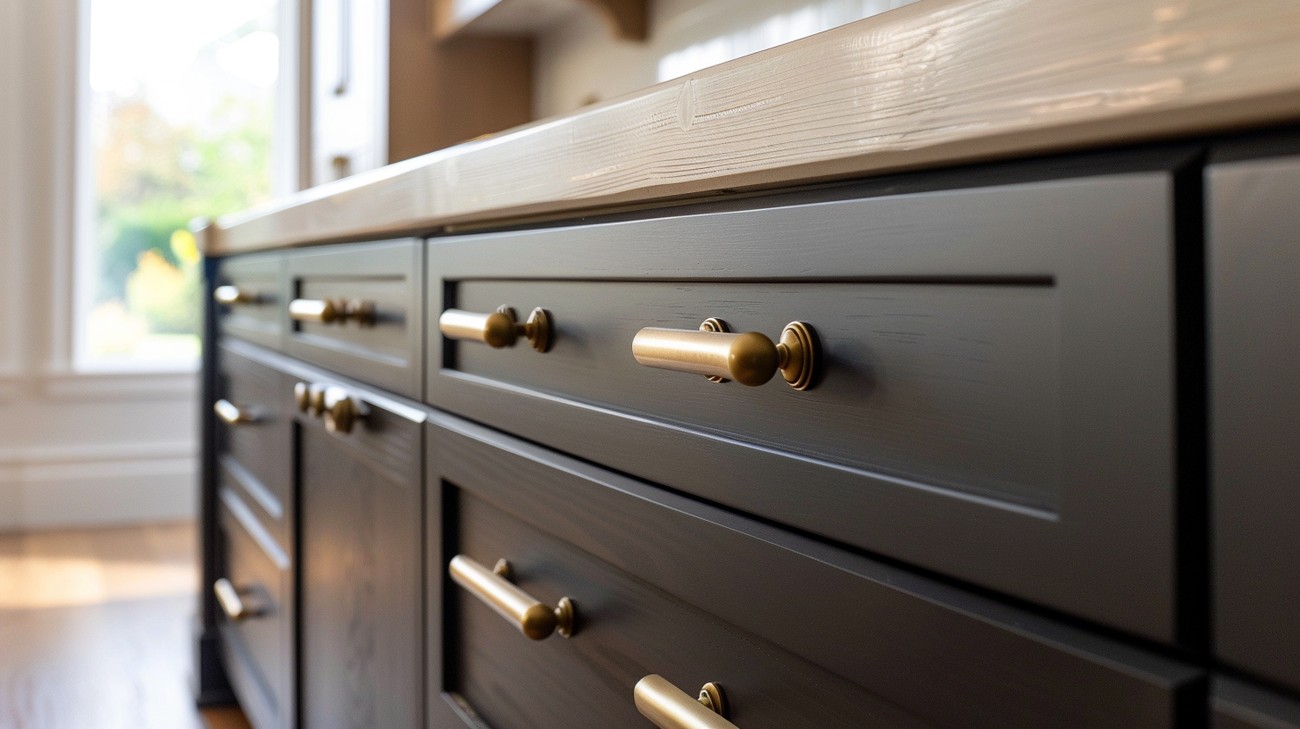
Kitchen Cabinet Hardware FAQ
What types of kitchen cabinet hardware are available?
There is a wide variety of kitchen cabinet hardware to choose from, including knobs, pulls, hinges, and handles. Knobs are typically round and attach with a single screw, making them easy to install and replace. Pulls, on the other hand, usually require two attachment points and provide a more contemporary look. Hinges are essential components that allow cabinet doors to swing open and closed smoothly and come in visible or concealed options. Handles can be sleek and modern or intricate and ornate, depending on your aesthetic preference. Each type of hardware serves a functional purpose while contributing to the kitchen's overall design.
How do I choose the right kitchen cabinet hardware finish?
Choosing the right finish for kitchen cabinet hardware depends largely on the style of your kitchen and your personal preferences. Common finishes include brushed nickel, oil-rubbed bronze, chrome, stainless steel, and brass. Brushed nickel provides a warm hue that complements both contemporary and traditional kitchens. Oil-rubbed bronze adds an antique charm that pairs well with rustic décors. Chrome and stainless steel offer sleek, modern appeal, ideal for contemporary kitchens. Brass can bring a vintage or classic touch with its warm, golden tone. Consider existing elements such as lighting fixtures, appliances, and faucets when selecting a finish for a cohesive look.
Can I mix and match different types of kitchen cabinet hardware?
Yes, mixing and matching different types of kitchen cabinet hardware is a creative way to add personality to your kitchen. When done correctly, it can enhance both form and function in your space. To achieve a harmonious look, choose complementary finishes and styles. For example, pair brass knobs with brass pulls or mix matte black handles with brushed nickel hinges for a contrasting effect. Another approach is to use different types of hardware for upper and lower cabinets or for drawers versus doors to create visual interest. Consistency in theme or material will help maintain a cohesive design.
How do I measure for kitchen cabinet hardware?
Accurate measurement is crucial to ensure your kitchen cabinet hardware fits perfectly. For knobs, simply measure the diameter of the knob itself and the space on the cabinet where it will be installed. For pulls and handles, measure from the center of one screw hole to the center of the other, known as the "center-to-center" measurement. This will ensure the pulls align correctly with pre-drilled holes or existing hardware. Consider the scale of the cabinetry; larger cabinets may need longer pulls, while smaller ones can accommodate petite hardware. Always use a ruler or tape measure for the most accurate results.
What tools are needed to install kitchen cabinet hardware?
Installing kitchen cabinet hardware is a task that can be accomplished with just a few basic tools. A drill or screwdriver will be necessary to attach knobs, pulls, or handles to your cabinets. A measuring tape or ruler is crucial for accurate placement, ensuring the hardware is installed uniformly. A pencil is useful for marking drill holes before you commit. If you're installing hinge types, you might need a small level to ensure the doors hang correctly. Additionally, if existing holes don't match your new hardware, wood putty and matching paint may be needed for touch-ups.
How often should kitchen cabinet hardware be replaced?
There is no strict rule on how often kitchen cabinet hardware should be replaced, as it largely depends on usage, style preference, and wear. High-quality hardware can last for many years, but if your pulls or knobs are starting to look dated or show wear and tear, it might be time for an update. Trends in kitchen design can also influence how often you change your cabinet hardware. If you're planning a kitchen makeover or renovation, replacing your hardware is a cost-effective way to refresh the look. Regular maintenance, such as tightening screws or cleaning, can extend its life.
What is the best way to clean kitchen cabinet hardware?
Cleaning kitchen cabinet hardware is a simple task that can extend its lifespan and keep it looking fresh. For regular cleaning, use a soft cloth dipped in warm, soapy water to gently wipe down knobs, pulls, and handles. Avoid using abrasive sponges that can scratch the hardware finish. For more stubborn grime or tarnish, particularly on metal finishes, a solution of vinegar and water can be effective. Ensure you dry the hardware thoroughly to prevent water spots. For brass or antique-finish hardware, specialized polishes can enhance shine without damaging the surface.
What should I consider when replacing kitchen cabinet hinges?
When replacing kitchen cabinet hinges, it's crucial to consider the type of hinge, its visibility, and the degree of door movement it allows. Hinges come in two main types: concealed and exposed. Concealed hinges are hidden when the cabinet door is closed, providing a clean, modern look. Exposed hinges add a decorative element and are often used in traditional or country-style kitchens. It's also important to consider the door's weight and size to ensure the hinge can support it effectively. Look for soft-close features if you're aiming to minimize door slamming and ensure a quieter kitchen environment.
How can I ensure my kitchen cabinet hardware matches my kitchen style?
Ensuring your kitchen cabinet hardware matches your kitchen style involves considering your kitchen's overall design theme and choosing hardware that complements it. In a modern kitchen, sleek stainless-steel or matte black handles can reinforce contemporary elements. For a farmhouse or rustic kitchen, oil-rubbed bronze or distressed brass knobs add warmth and character. In traditional settings, intricate designs in polished brass or chrome can highlight classic elements. Evaluate your kitchen's color scheme, cabinet material, and existing fixtures like sinks and light fixtures to select hardware that ties the whole room together seamlessly.
Is it necessary to hire a professional to install kitchen cabinet hardware?
While hiring a professional to install kitchen cabinet hardware can ensure precision, it is not always necessary, especially for those with basic DIY skills. Many homeowners successfully install their own hardware with simple tools such as a drill, screwdriver, and measuring tape. Most manufacturers provide installation guidelines to make the process easier. However, if your cabinetry requires custom drilling or if you're installing hinges that affect alignment, you might benefit from professional assistance. This choice ultimately depends on your confidence in your ability to handle tools and whether you want to guarantee a flawless finish.

Buyer's Guide: What to Look For
Key Factors to Consider
When diving into the world of kitchen cabinet hardware, knowing what to focus on can help you make informed choices, ensuring your kitchen looks great and functions smoothly.
Material and Finish: The first thing that you should think about is the material and finish of the hardware. Common materials include stainless steel, brass, and bronze. These materials not only dictate the style but also affect durability and maintenance. Look for finishes that are resistant to tarnish and match your kitchen's aesthetic.
Style and Design: Your choice in cabinet hardware significantly impacts your kitchen's overall look. Decide whether you want something modern, classic, or transitional. Sleek and minimal designs work well in modern kitchens, while ornate designs might fit a traditional setting.
Size and Scale: Make sure the size of the hardware complements the size of your cabinets and drawers. Oversized handles on small drawers can look disproportionate, while tiny ones on large cabinets might seem lost. Measure before you buy, and consider how they will feel to use daily.
Functionality and Ease of Use: Hardware should not just be about looks. Consider how often you use your kitchen and whether the pull or knob is easy and comfortable to grasp. Smooth edges are preferable, especially in high-traffic areas.
Compatibility with Existing Fixtures: If you're replacing existing hardware, make sure the new hardware will fit into the current holes to avoid extra drilling and possible damage to your cabinets.
Must-have vs Nice-to-have Features
When choosing kitchen cabinet hardware, separate the essentials from the extras to ensure you're focusing on what truly matters.
Must-have Features: Durability, ease of installation, and functionality should be at the top of your list. Sturdy construction ensures longevity, while easy installation prevents frustration. Consider how easily you can clean and maintain the hardware—features that contribute significantly to functionality.
Nice-to-have Features: Soft-close mechanisms for pull-out handles, interchangeable backplates, and customizable finishes are luxuries rather than essentials. These features can enhance your kitchen's usability and style, but they aren't necessary for a functional kitchen.
Red Flags to Avoid
Be aware of potential warning signs when selecting cabinet hardware that might indicate poor quality or future issues.
Flimsy Materials: Avoid hardware made from low-quality metals or poorly finished materials that might chip or dent easily. Plastic components, unless specifically designed for durability, can degrade quickly in a busy kitchen environment.
Inconsistent Finishes: If the finish looks uneven or inconsistent, it might wear off quickly, leaving your kitchen looking shabby.
Complex Installation Requirements: Hardware that requires overly complicated installation might not be worth the hassle, especially if you're not keen on DIY.
Questions to Ask Before Buying
Asking the right questions can help you make a more informed decision.
What is the warranty on this hardware? A good warranty can be a sign of quality and manufacturer confidence.
How do I clean and maintain this finish? Some finishes require specific cleaning products to maintain their look.
Does it fit my existing cabinetry? If not, what modifications will be necessary?
Is sample hardware available? Trying a piece before buying can give a better sense of compatibility with your kitchen's style and functionality.
How to Spot Quality
Identifying quality in kitchen cabinet hardware is crucial to ensure that your investment lasts.
- Weight and Feel: Quality hardware generally feels more substantial. It should have a reassuring weight to it, indicating solid construction.
- Smooth Operation: Check how smoothly a pull-out handle or drawer slides. Quality mechanisms will feel effortless compared to flimsy alternatives.
- Brand Reputation: Established brands often maintain quality standards. Look for reviews or recommendations from reputable sources or professionals.
- Materials: Solid metals like stainless steel, solid brass, or aluminum indicate quality. Finishes such as brushed nickel, oil-rubbed bronze, or chrome often outperform painted or powder-coated surfaces in terms of longevity.

Final Thoughts
Choosing the right kitchen cabinet hardware can dramatically enhance the look and feel of your space, so it’s important to take your time and consider both style and functionality. Whether you prefer sleek modern designs or classic finishes, the right choices can reflect your personal taste and make your kitchen truly stand out.
If you're feeling overwhelmed or need some expert guidance, we’re here to help. At New Day Construction, we understand the unique styles and needs of homeowners in Kirkland, WA, and we’re ready to assist you in selecting the perfect kitchen cabinet hardware. Reach out to us for a consultation, and let’s bring your vision to life together.
